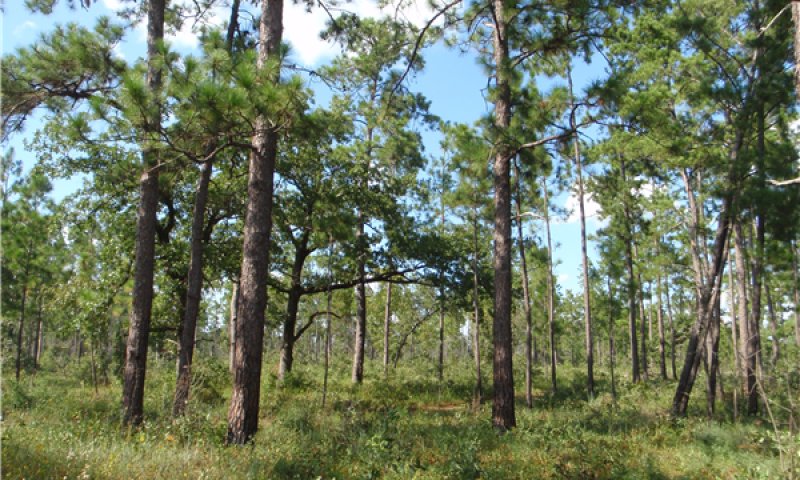

Natural Resources
Conservation Service
Ecological site F152BY009TX
Sandy Terrace
Last updated: 9/22/2023
Accessed: 12/22/2025
General information
Provisional. A provisional ecological site description has undergone quality control and quality assurance review. It contains a working state and transition model and enough information to identify the ecological site.

Figure 1. Mapped extent
Areas shown in blue indicate the maximum mapped extent of this ecological site. Other ecological sites likely occur within the highlighted areas. It is also possible for this ecological site to occur outside of highlighted areas if detailed soil survey has not been completed or recently updated.
MLRA notes
Major Land Resource Area (MLRA): 152B–Western Gulf Coast Flatwoods
Major Land Resource Area (MLRA) 152B, Western Gulf Coast Flatwoods, is in eastern Texas and western Louisiana. Locally termed the Flatwoods, the area is dominated by coniferous forest covering 5,681 square miles (14,714 square kilometers). The region is a hugely diverse transition zone between the northern and eastern mixed forests and southern and western coastal prairies and grasslands.
Classification relationships
Major Land Resource Area (MLRA) (USDA-Natural Resources Conservation Service, 2006)
Ecological site concept
The Sandy Terrace ecological site has deep sandy soils greater than 80 inches (203 centimeters) with little horizon development. The upland landscape, coupled with properties associated with the depth of the sand, forms its unique plant community.
Associated sites
| F152BY008TX |
Acid Baygall Soils have a spodic horizon and are extremely acid. Sites are not open and have dense thickets of large gallberry. |
|---|---|
| F152BY010TX |
Terrace Soils have an increase in clay causing more water availability to plants. Sites have higher plant productivity potentials. |
Similar sites
| F152BY010TX |
Terrace Soils have an increase in clay, causing more water availability to plants. Sites have higher plant productivity potentials. |
|---|---|
| F152BY012TX |
Well Drained Bottomland Soils are on a lower landscape position and flood frequently. |
| F152BY006TX |
Well Drained Loamy Upland Soils have an increase in clay, causing more water availability to plants. Sites have higher plant productivity potentials, typically with higher canopy covers, higher basal areas, and more robust herbaceous plant communities. |
Table 1. Dominant plant species
| Tree |
(1) Pinus palustris |
|---|---|
| Shrub |
Not specified |
| Herbaceous |
(1) Schizachyrium scoparium |
Click on box and path labels to scroll to the respective text.
Ecosystem states
| T1A | - | Absence of disturbance, coupled with natural regeneration over time |
|---|---|---|
| T1B | - | Merchantable timber is harvested by clearcut and site is planted to a monoculture of pine trees |
| T1C | - | Removal of native vegetation and introduction of improved forage species or annual crops |
| R2A | - | Reduction of overstory canopy using fire and selective thinning |
| T2A | - | Merchantable timber is harvested by clearcut and site is planted to a monoculture of pine trees |
| T2B | - | Merchantable timber harvested by clearcut, followed by planting of improved forage species or annual crops |
| R3A | - | Selective harvest combined with reintroduction of natural disturbances and native species |
| T3A | - | Lack of natural/anthropogenic disturbance and natural regeneration over time |
| T3B | - | Timber harvest by clearcut, followed by planting improved forage species or annual crops |
| T4A | - | Lack of natural/anthropogenic disturbance and natural regeneration over time |
| T4B | - | Site is planted to a monoculture of pine trees |

